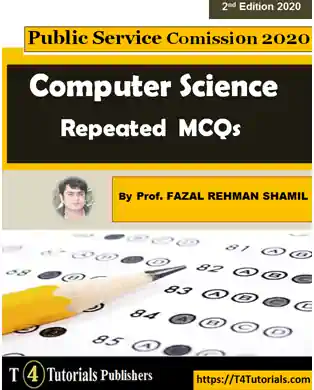1. Where the Paging is implemented ……
(a) Software
(b) Operating System
(c) Hardware
(d) B and C
(e) All of these
(f) None of these
2. Which one of the following is not true about Kernel?
(a) The kernel is made of various modules which can not be loaded in the running operating system
(b) Kernel remains in the memory during the entire computer session
(c) the kernel is the program that constitutes the central core of the operating system
(d) the kernel is the first part of the operating system to load into memory during booting
(e) All of these
(f) None of these
3. The page fault is the ……
(a) error in a specific page
(b) Reference to a page belonging to another program
(c) Access to a page not currently in memory
(d) When a program is not currently in memory
(e) All of these
(f) None of these
4. Which one of the following does not allow the approach to Deadlocks Handling?
(a) Detect & Recover
(b) Virtual Memory
(c) Deadlock Prevention
(d) Deadlock Avoidance
(e) All of these
(f) None of these
5. What do you mean by “Operating System”?
(a) Link to interface the hardware and application programs
(b) system service provider to the application programs
(c) collection of programs that manages hardware resources
(d) C and D
(e) All of these
(f) None of these
6. What is the initial value of the Semaphore that allows only one of the many processes to enter their critical sections?
(a) 0
(b) 16
(c) 1
(d) 8
(e) All of these
(f) None of these
7. In which one of the following the Memory allocation policy allocates the largest hole to the process?
(a) Worst-Fit
(b) First-Fit
(c) Best-Fit
(d) C and D
(e) All of these
(f) None of these
8. What is the main function of the command interpreter?
(a) To handle the files in the operating system
(b) to provide the interface between the API and application program
(c) To get and execute the next user-specified command
(d) A and D
(e) All of these
(f) None of these
9. How we can describe the Algorithm?
(a) A step by step procedure for solving a problem
(b) A branch of mathematics
(c) A computer language
(d) C and A
(e) All of these
(f) None of these
10. Which of the following is also known as the Chunks of a memory?
(a) Page
(b) Frame
(c) Sector
(d) Offset
(e) All of these
(f) None of these
11. Which one of the given above is not a real-time operating system?
(a) Palm OS
(b) Windows CE
(c) VxWorks
(d) RTLinux
(e) All of these
(f) None of these
12. Which one of the following is a Block device?
(a) Disk
(b) Terminals
(c) Printer
(d) Mouse
(e) All of these
(f) None of these
Note: Block devices are nonvolatile mass storage devices whose information can be accessed in any order.
Next Operating System MCQs
-
- Operating System MCQs
- Operating System Multiple Choice Questions
- Operating Systems OS MCQs-Important
- File system Interface MCQS Questions Answers in Operating Systems
- Virtual Memory MCQS Questions Answers in Operating Systems
- Operating System Structures MCQs
- Process Synchronization Solved MCQs Questions Answers
- Deadlock MCQs Questions Answers
- Memory Management MCQs Questions Answers
- Unix Operating system solved MCQ’s Questions Answers
- Primary Memory Solved MCQs Questions Answers
- Linux process Management MCQs – Solved
- Linux File Permissions Solved MCQs
- Linux Startup and Shutdown MCQs
- Linux File Permissions MCQs Questions Answers
- Linux process Management MCQs – Solved
- Process Synchronization Solved MCQs Questions Answers
- Operating System Structures MCQs
- CPU Scheduling Solved MCQ’s Questions Answers
- Deadlock MCQs Questions Answers
- Memory Management MCQs Questions Answers
- File system Interface MCQS Questions Answers in Operating Systems
- Virtual Memory MCQS Questions Answers in Operating Systems
- Operating System Multiple Choice Questions Answers
- Real-Time System MCQs
- Real-Time Systems CPU Scheduling MCQs



